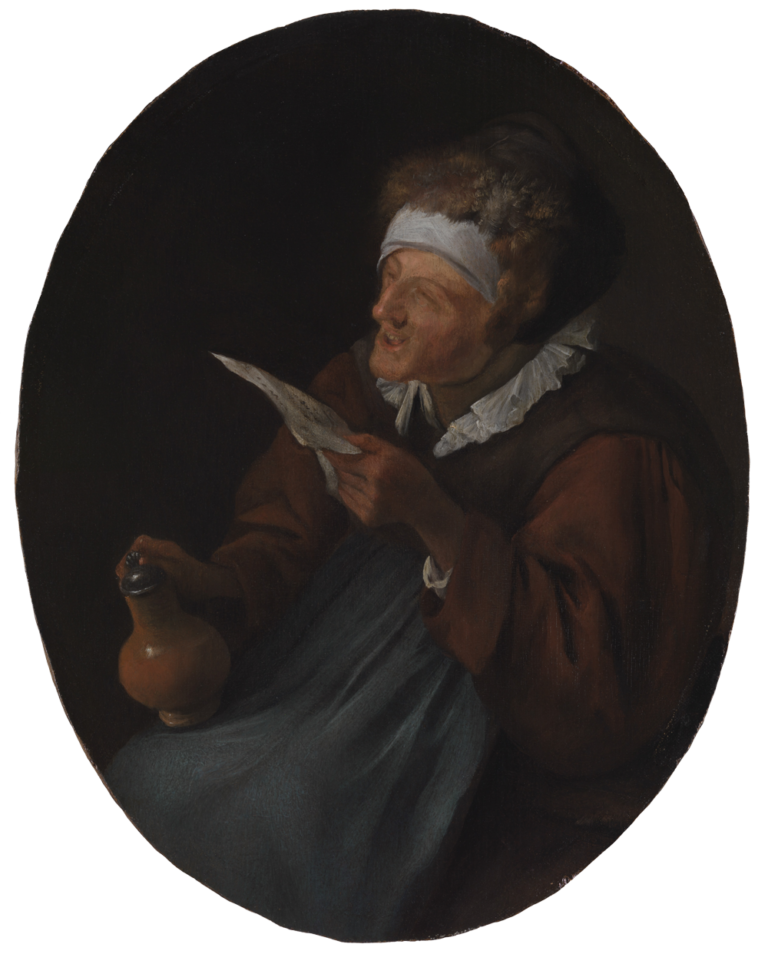Situated against a dark background the seated old woman in Jan Steen’s painting joyously sings as she holds a sheet of music in her left hand, the promise of liquid pleasures in her earthenware jug adding to her festive mood. She wears a white cap surmounted by a fur-trimmed head covering, and a beautifully executed, pleated white lace collar. Otherwise, Steen has rendered the woman’s simple clothing in broad areas of red, brown and blue.
In executing this work, Steen paid exceptional care to the rendering of the woman’s fur head-covering, an article of clothing that also appears in paintings by Gerrit Dou (1613–75), for example in Dou’s Rembrandtesque Scholar Reading in the State Hermitage Museum, St. Petersburg.1 The attention Steen paid to articulating this head covering and collar also owes much to Dou, as in that master’s depictions of Rembrandt’s mother from the early 1630s,2 and his Old Woman Reading a Book, ca. 1660, which is also in St. Petersburg (fig 1).3 Even the upright oval shape of the panel may owe its inspiration to Dou. Steen rarely painted on panels with this shape, but Dou often did. These similarities in costume, technique and panel shape, however, make all the more evident the differences in the behavior of Steen’s slightly tipsy and earthy old crone and the more pious women seen in Dou’s paintings. It is almost as though Steen intended to poke fun at that artist’s virtuous old women.
Steen’s oeuvre contains few points of reference for dating this work. Nevertheless, an approximate date for the Leiden Collection painting of around 1660 seems likely because of the careful rendering of the old woman’s figure and her clothes, consistent with Steen’s manner of painting at that time. One somewhat comparable work is Drinker at Smith College, c. 1660, which is also executed in a detailed manner, and where the drinker is similarly posed (fig 2).4 The way the old woman squints while reading the words of her song recalls figures in other of Steen’s small undated paintings, such as Man Sharpening a Quill Pen.5 Thematically, it seems likely that this delightful painting once belonged to a series of the five senses, where it would have portrayed either the sense of sight or the sense of sound.6
